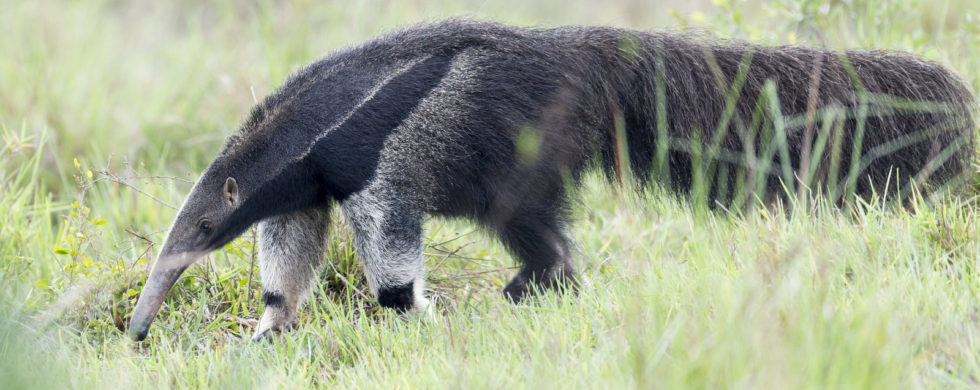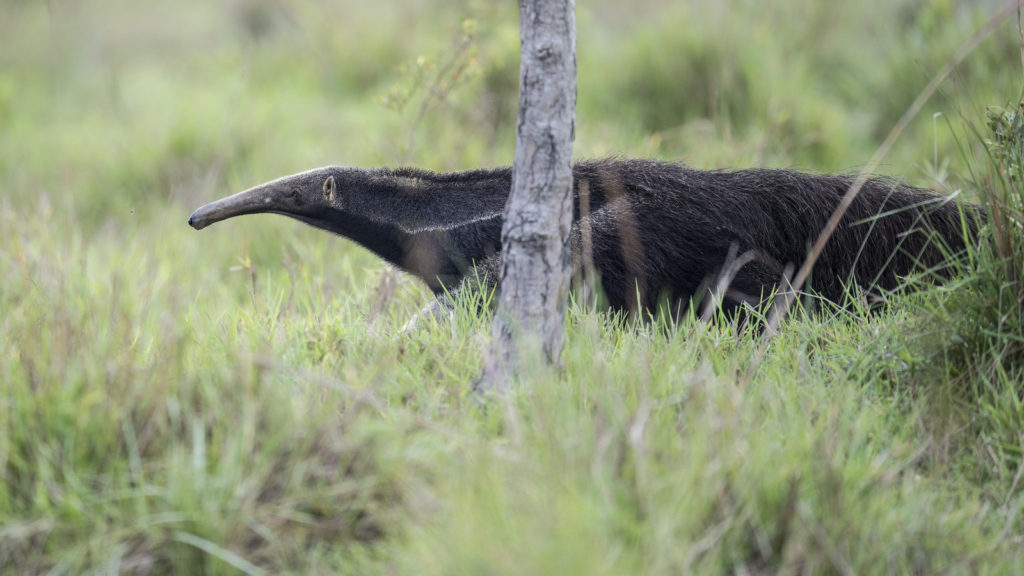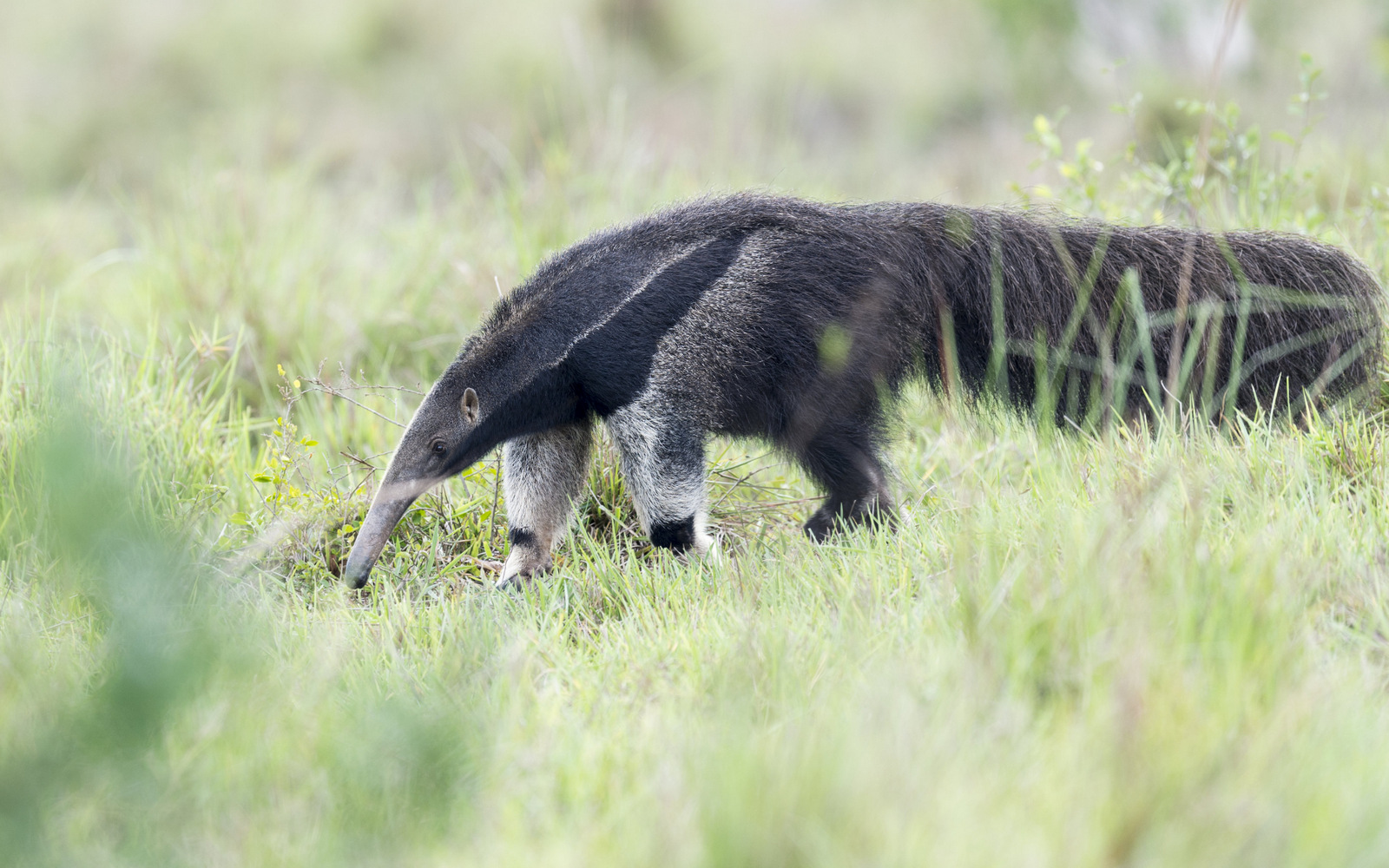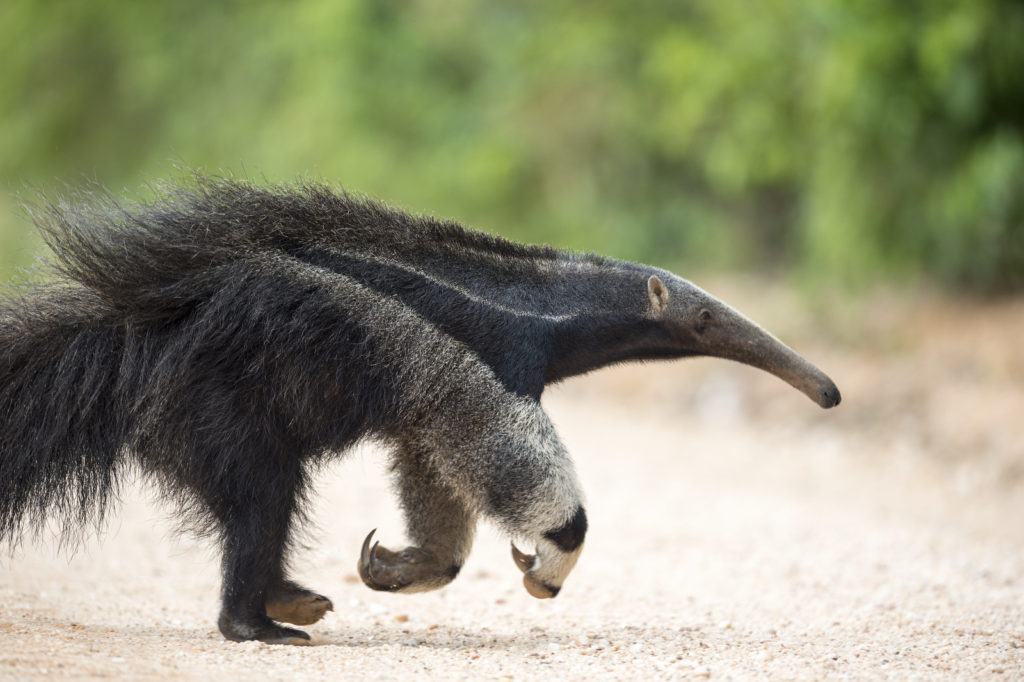
Jul
31
2018Flat out Amazing
Shot of the Month – July 2018
So there I was sitting in the back seat of the car. I was tired but feeling content — it was the final day of our trip to the Pantanal to see, primarily, jaguars. We were driving to the local airport to begin our series of flights home. We had some amazing sightings and I had gotten some very nice photos. I always hate to see a trip end but my wistfulness was less than usual given all that we had experienced. By the second hour of our three-hour drive, the scenery went by like a blur as my mind wandered. I was jolted from my dreamy state when Naun, our guide, yelled.
“STOP! STOP! Michael get your camera ready!!!”
Huh, What? I didn’t bother to look as I knew that if Naun was this excited, it must be something good. The problem was that all our gear was completely packed up. My camera bodies were in one bag next to me. My lenses were in another bag, in the back of the vehicle. As we pulled over I yanked a camera body out and got out of the car. I opened the rear hatch of the car, yanked my camera bag out, and quickly pulled off all of the covers and caps and put the kit together. Naun waited impatiently by the edge of the road and motioned for us to go through the wire fence that he was holding up. We walked into the field and there it was — a Giant Anteater (GA)!! And he was ambling across the field with purpose!! He was still a fair distance from us but he was heading in our direction. I raised my camera to try and at least document this amazing sight. As I looked through the viewfinder I could see nothing. The car was air conditioned and when we jumped out into the heat of the day the sudden temperature change caused the front element of my lens to fog over.
F&^%$$!!
I took the bottom of my shirt and used it to wipe off the glass (I normally loathe to touch the glass, but this was an emergency!). I got a few shots off but then the anteater saw us and went in another direction. We got back in the car and moved forward. We set up and waited — it was clear that the Giant Anteater wanted to cross the road.
In the end, I managed to get a few shots and eventually, the GA crossed the road just a few feet from us. Wow! Even though the images are not great, I had to share this wonderful, other-worldly beast. The Giant Anteater is surely one of the world’s stranger-looking creatures.
Refuge from another dimension?
At a distance, the GA looks supremely flat – as if he escaped from the pages of a purely two-dimensional world. The Giant Anteater can reach seven feet in length from head to tail and he just looks soooo looong. His width seems so oddly out of proportion to his length giving the appearance of a “flat screen” creature. They say that black is thinning, but come on…
Winner by a nose
 And then there is that snout. Try not to stare but that is a doozy of honker. The snout takes up most of his head and ends with a tiny mouth and nostrils. As you may have guessed from his name the Giant Anteater specializes in eating ants and termites. That nose is well shaped for plunging into the narrow passageways of the termite mounds in search of the small insects. The Ant Bear, a much more endearing moniker, can eat 30,000 insects a day. That tiny mouth has no teeth so the GA crushes the insects against its palate before swallowing them.
And then there is that snout. Try not to stare but that is a doozy of honker. The snout takes up most of his head and ends with a tiny mouth and nostrils. As you may have guessed from his name the Giant Anteater specializes in eating ants and termites. That nose is well shaped for plunging into the narrow passageways of the termite mounds in search of the small insects. The Ant Bear, a much more endearing moniker, can eat 30,000 insects a day. That tiny mouth has no teeth so the GA crushes the insects against its palate before swallowing them.
The GA has a narrow tongue that is 2 feet long. is shaped like a strand of spaghetti, and is covered in tiny backward-pointing spines covered in sticky saliva — making it a great tool for catching insects. The GA can dart its tongue inside a mound up to 150 times a minute to catch its prey.
The ant bear has terrible eyesight and equally bad hearing but its sense of smell is 40x more sensitive than ours – he can smell termites and ants that may be miles away. Ok, respect for the nose!
The Claw! (obscure movie reference)
Adding to the peculiar nature of this beast, the GA walks on its knuckles, like a gorilla. Why? To protect those impressive claws that it uses to tear apart termite mounds, of course. Below we have a GA in full gallop providing a good view of the claws and how he folds his front feet over while walking to keep these vital tools sharp. The ant bear has five toes on each foot — the front feet have claws, which are particularly elongated on the second and third digits. The GA is careful to not completely destroy a mound to ensure a reliable food supply. He tears a mount open just enough to allow his narrow snout to reach inside. He only spends about 1 minute feeding at a site before moving on and in a given day he may visit up to 200 nests. These claws can also be used for defense. If a GA is attacked, say by a puma or a jaguar, the GA will stand up on its tail and slash those claws from side to side with great effect. These creatures are very shy but they have been known to kill humans when cornered or if startled in the wild.
That Tail
The body of the GA is about 3-4 feet in length and that wonderful tail can add another 2-3 feet to the length of the animal. The tail has extra long hairs and helps make the GA seem much bigger than he really is. When resting the GA will carve a shallow cavity in the ground and then curl up and use its tail as a blanket!! A-dorable! The tail can help conserve heat and act as camouflage.
Wow, what a gift to see what is becoming an increasingly rare animal. In just 10 years, from 2000 to 2010 the total population of GAs has declined by 30%. Tragically, in 1994 close to 350 Giant Anteaters died due to wildfires at Emes National Park in Brazil. Currently, scientists think there may be about 5,000 ant bears left in the world. Giant Anteaters are native to Central and South America though it seems that they have been extirpated from most of Central America. (source)
Why did the ant bear cross the road?
Heck if I know, but I am eternally grateful that this one did! Until next month…..m
Check out this amazing interaction between a jaguar and a giant anteater!


